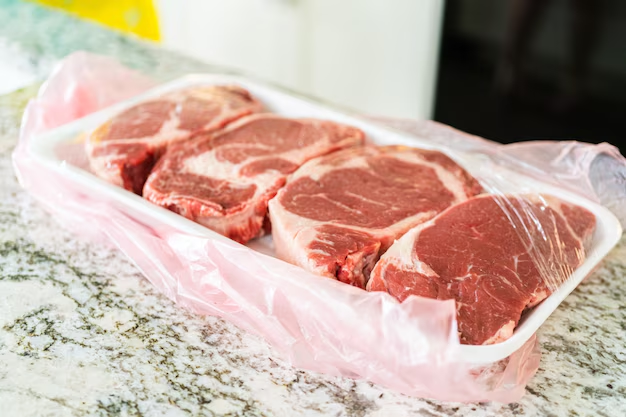How Long Can Organic Beef Last in the Refrigerator Uncooked?
Understanding how long organic beef can last in the refrigerator uncooked is crucial for both food safety and maximizing the quality of your culinary creations. Organic beef, like all meats, is subject to spoilage, and keeping it fresh requires knowledge of proper storage techniques and awareness of safe consumption times. In this detailed guide, we'll explore this topic from multiple angles, providing valuable insights to help you manage your organic beef supply effectively.
The Basics of Organic Beef Storage
What Is Organic Beef?
Organic beef comes from cattle that are raised without the use of synthetic pesticides, fertilizers, or genetically modified organisms (GMOs). These cattle are also not given antibiotics or growth hormones. The stringent standards for organic certification aim to ensure that the meat is of high quality and aligns with environmentally friendly farming practices.
General Storage Guidelines for Uncooked Beef
When it comes to storing uncooked beef in the refrigerator, several factors can influence its longevity:
Temperature Control: Your refrigerator should be set to 40°F (4°C) or below. This helps slow bacterial growth, which can cause spoilage.
Packaging: Proper packaging is essential. Keep the beef in its original packaging if unopened, or wrap it tightly in plastic wrap or aluminum foil if opened. This prevents air exposure, which can lead to spoilage.
Placement: Store beef on the bottom shelf of your fridge to prevent any leakage onto other foods. This area is typically the coldest part of the refrigerator.
How Long Can Organic Beef Last?
Freshness Timeline
Generally, uncooked organic beef can last in the refrigerator for 3 to 5 days. This timeline can vary based on factors such as:
Initial Freshness: Freshness at the time of purchase affects how long the beef will last. Recently packaged beef will last longer than beef that’s nearing its sell-by date.
Refrigeration Consistency: Fluctuations in fridge temperature impact spoilage rates. If your refrigerator temp varies, periodic checks are necessary.
Understanding Sell-By and Use-By Dates
Sell-By Date: This date helps retailers manage inventory and indicates how long the product should be on display for sale. It's not a safety date.
Use-By Date: This is the manufacturer's estimate of when the product will be at its peak quality. Consuming beef shortly after this date is often safe if it has been stored properly.
Recognizing Spoilage
Visual Indicators
Color Changes: Fresh beef is usually a bright red. If it turns brown or gray on the surface, it might be losing its freshness.
Mold: Any signs of mold are an immediate indication that the beef should be discarded.
Sensory Checks
Odor: A sour or ammonia-like smell is a sign of spoilage. Fresh beef has a slight scent but should not be overpowering.
Texture: Organic beef should feel firm to the touch. If it is slimy or sticky, that’s a red flag.
The Importance of Smell
Your sense of smell is often the best tool in determining whether meat is still safe to consume. If you detect any foul odors, it's best to err on the side of caution and dispose of the beef.
Tips for Extending Shelf Life
Freezing for Longevity
One effective way to extend the shelf life of organic beef is by freezing it. Here are some helpful tips:
Timing: Freeze the beef before the 3 to 5-day window elapses for the best quality preservation.
Proper Wrapping: Use freezer bags or airtight containers. Removing as much air as possible is crucial to prevent freezer burn.
Thawing Tips
When ready to use your frozen beef, consider safe thawing practices:
Refrigerator Thawing: This method is the safest. It may take 24 hours or more to fully thaw a large cut.
Cold Water Thawing: Submerge the beef in cold water, changing the water every 30 minutes. This method is faster but requires more attention.
Avoid Room Temperature: Leaving beef to thaw at room temperature can promote bacterial growth.
Cooking and Handling Organic Beef
Safe Cooking Practices
Ensure your organic beef reaches the appropriate internal temperature to kill harmful bacteria:
Ground Beef: Should be cooked to at least 160°F (71°C).
Steaks and Roasts: A minimum internal temperature of 145°F (63°C), followed by a rest time of at least 3 minutes.
Cross-Contamination Prevention
Always adhere to these practices to avoid cross-contamination:
Regularly Wash Hands: Especially after handling raw beef.
Separate Cutting Boards: Use different boards for meat and vegetables.
Sanitize Surfaces: Clean countertops and kitchen tools promptly after use.
Key Takeaways and Practical Tips
Here's a handy summary of useful tips for storing and handling organic beef:
- 🥩 Freshness Window: Organic beef generally lasts 3 to 5 days in the refrigerator.
- ❄️ Freezing: Safely extend beef's life by freezing before spoilage dates approach.
- 👃 Smell Test: Rely on your nose to detect spoilage. If foul odors are present, discard it.
- 📏 Check Temperature: Maintain your fridge at 40°F (4°C) or lower to slow bacterial growth.
- 🔪 Avoid Cross-Contamination: Use separate cutting boards and wash hands frequently.
Ensuring Quality and Safety
Understanding the nuances of storing organic beef correctly will not only ensure its freshness and quality but also protect you and your family from potential foodborne illnesses. By being informed, you’ll enjoy delicious, safe organic beef in all your culinary endeavors, enhancing the nutrition and satisfaction of your meals. Whether you are a long-time fan of organic meat or new to it, these insights equip you with the knowledge to make your kitchen practices top-notch!
